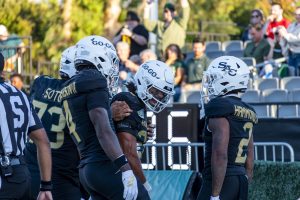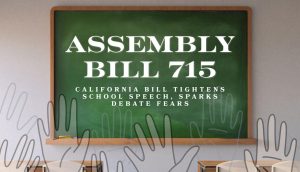Tsunami victims honored
January 25, 2005
Doves will fly into the air after a moment of silence Thursday morning in the University Union Ballroom to honor the thousands of lives affected by the tsunami, which left more than 200,000 dead and many homeless in 10 different countries bordering the Indian Ocean.
The doves symbolize peace, healing and remembrance, which represent the theme for the day as the Multi-Cultural Center tries to bring together support during the aftermath of the natural disaster.
&It&s something that has touched everyone,& said Ric Brown, vice president for Academic Affairs.
Brown will start the tsunami program with an opening speech at 10 a.m. about Sacramento State&s role in educating people on the situation in Southeast Asia.
&A university is a perfect place to talk about a worldwide tragedy,& Brown said.
Leonard Valdez, director of the Multi-Cultural Center, said the center wants the historical disaster added to future course work in classes, with sections on the tsunami and the Southeast Asia region.
&We want faculty to talk about it to students,& Valdez said.
Information about the tsunami, people and areas affected including facts, statistics, Web sites, health and counseling information will also be handed out.
Valdez said that along with telling people about the disaster, the program will give students who are from the impacted regions an opportunity to find each other and share their thoughts and reactions to the tsunami.
Sac State has more than 800 students who are from the damaged countries, Valdez said, and between 300 and 500 of them are Indian.
&Students come into contact with other students from different countries every day on campus,& said Valdez, who hopes that the program will bring a lot of them together.
Some Indian students on campus found each other long before the tsunami struck and now are helping the center organize the tsunami program.
Amit Rai, a graduate student in computer science, is Indian and a part of the Indian Students Association.
He was in India when the tsunami hit the country&s coastal communities, but was far north and away from the danger.
&I&m happy to see all of the support here,& Rai said.
None of the donations and support from the United States that have been sent to help will reached the victims living in India.
Rai said for the first time the Indian government has become self-supporting, helping out other countries while refusing help for itself.
Rai has been making fliers and helping his friend prepare a presentation for the program on campus, which will show people the damage done to the Southeast Asia region and how people have been helping over there.
&There&s just total destruction,& Rai said.
The tsunami program will also give students and anyone else on campus a chance to write down how they feel about the &total destruction.&
The poetry, notes and comments will be burned in a ceremony on a later date.
Valdez said the center did something similar after the Sept. 11 terrorist attacks.
This time it will be too difficult for the center to send all of the poetry, comments and notes to all the affected countries so they will be publicly burned, mimicking a similar ceremony done in Tibet.
Traditionally, after their country experiences a tragedy, the people in Tibet put out prayer flags for a month, which are then burned in the Tibetan belief that the smoke will carry their prayers.
Valdez said the center has not decided when or where the ceremonial burning will take place, but that he wants to have it somewhere near water to symbolize the wave that took so many lives on Dec. 26.
In addition to the ceremonial burning, which will honor both the dead and the living, several campus organizations have offered their services to help students cope with all of the loss.
The Women&s Resource Center will be helping provide students, faculty and staff information on where they can go if they need to talk to someone.
Psychological Services and the Employee Assistance Program will have booths Thursday to give people information on mental and physical health along with information on their sessions, which don&t always need an appointment.
The Employee Assistance Program&s counselors see the faculty and staff while Psychological Services is only available to students.
Deana Frandsen, from the Employee Assistance Program, said she expects people will want to talk to someone after such a tragic event.
&You don&t know who has been affected by it and how much,& Frandsen said.
























































































































